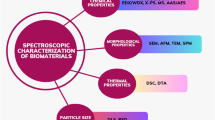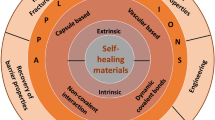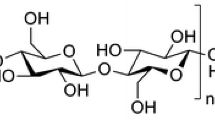Abstract
Applications involving freeze–thaw, such as cryoplasty or cryopreservation can significantly alter artery biomechanics including an increase in physiological elastic modulus. Since artery biomechanics plays a significant role in hemodynamics, it is important to understand the mechanisms underlying these changes to be able to help control the biomechanical outcome post-treatments. Understanding of these mechanisms requires investigation of the freeze–thaw effect on arterial components (collagen, smooth muscle cells or SMCs), as well as the components’ contribution to the overall artery biomechanics. To do this, isolated fresh swine arteries were subjected to thermal (freeze–thaw to −20 °C for 2 min or hyperthermia to 43 °C for 2 h) and osmotic (0.1–0.2 M mannitol) treatments; these treatments preferentially altered either the collagen matrix (hydration/stability) or smooth muscle cells (SMCs), respectively. Tissue dehydration, thermal stability and SMC functional changes were assessed from bulk weight measurements, analyses of the thermal denaturation profiles using Fourier transform infrared (FTIR) spectroscopy and in vitro arterial contraction/relaxation responses to norepinephrine (NE) and acetylcholine (AC), respectively. Additionally, Second Harmonic Generation (SHG) microscopy was performed on fresh and frozen–thawed arteries to directly visualize the changes in collagen matrix following freeze–thaw. Finally, the overall artery biomechanics was studied by assessing responses to uniaxial tensile testing. Freeze–thaw of arteries caused: (a) tissue dehydration (15% weight reduction), (b) increase in thermal stability (~6.4 °C increase in denaturation onset temperature), (c) altered matrix arrangement observed using SHG and d) complete SMC destruction. While hyperthermia treatment also caused complete SMC destruction, no tissue dehydration was observed. On the other hand, while 0.2 M mannitol treatment significantly increased the thermal stability (~4.8 °C increase in denaturation onset), 0.1 M mannitol treatment did not result in any significant change. Both 0.1 and 0.2 M treatments caused no change in SMC function. Finally, freeze–thaw (506 ± 159 kPa), hyperthermia (268 ± 132 kPa) and 0.2 M mannitol (304 ± 125 kPa) treatments all caused significant increase in the physiological elastic modulus (E artery) compared to control (185 ± 92 kPa) with the freeze–thaw resulting in the highest modulus. These studies suggest that changes in collagen matrix arrangement due to dehydration as well as SMC destruction occurring during freeze–thaw are important mechanisms of freeze–thaw induced biomechanical changes.







Similar content being viewed by others
Notes
Refers to freeze–thaw data added from our previous publication for comparison.
References
Aksan, A., and J. J. McGrath. Thermomechanical analysis of soft-tissue thermotherapy. J. Biomech. Eng. 125:700–708, 2003.
Balasubramanian, S. K., et al. Thermal injury prediction during cryoplasty through in vitro characterization of smooth muscle cell biophysics and viability. Ann. Biomed. Eng. 36(1):86–101, 2008.
Bateson, E. A. J., and D. E. Pegg. Cryopreservation of arteries. Cryo-Letters 15:15–20, 1994.
Cai, S., and B. R. Singh. Identification of β-turn and random coil amide III infrared bands for secondary structure estimation of proteins. Biophys. Chem. 80(1):7–20, 1999.
Cai, S., and B. R. Singh. A distinct utility of the amide III infrared band for secondary structure estimation of aqueous protein solutions using partial least-squares methods. Biochemistry 43(9):2541–2549, 2004.
Castier, Y., et al. Cryopreserved arterial allograft reconstruction for peripheral graft infection. J. Vasc. Surg. 41(1):30–37, 2005.
Fava, M., et al. Cryoplasty for femoropopliteal arterial disease: late angiographic results of initial human experience. J. Vasc. Interv. Radiol. 15(11):1239–1243, 2004.
Fischer, G. M., and J. G. Llaurado. Collagen and elastin content in canine arteries selected from functionally different vascular beds. Circ. Res. 19(2):394–399, 1966.
Fung, Y. C. Wave Propagation in Blood Vessels, in Biodynamics Circulation. New York: Springer-Verlag, pp. 104–115, 1984.
Fung, Y., and P. Tong. Classical and Computational Solid Mechanics. World Scientific, 2001.
Grassl, E. D., and J. C. Bischof. In vitro model systems for evaluation of smooth muscle cell response to cryoplasty. Cryobiology 50(2):162–173, 2005.
Han, B., J. D. Miller, and J. K. Jung. Freezing-induced fluid–matrix interaction in poroelastic material. J. Biomech. Eng. 131:021002, 2009.
Hong, J., et al. Hibernation induction trigger reduces hypoxic damage of swine skeletal muscle. Muscle Nerve 32(2):200–207, 2005.
Humphrey, J. D. Cardiovascular Solid Mechanics: Cells, Tissues, and Organs. Springer, 2002.
Joye, J. D. The clinical application of cryoplasty for infrainguinal peripheral arterial disease. Tech. Vasc. Interv. Radiol. 8(4):160–164, 2005.
Kaushal, S., et al. Functional small-diameter neovessels created using endothelial progenitor cells expanded ex vivo. Nat. Med. 7:1035–1040, 2001.
Laird, J., et al. Cryoplasty for the treatment of femoropopliteal arterial disease: results of a prospective, multicenter registry. J. Vasc. Interv. Radiol. 16(8):1067–1073, 2005.
Miles, C. A., T. V. Burjanadze, and A. J. Bailey. The kinetics of the thermal denaturation of collagen in unrestrained rat tail tendon determined by differential scanning calorimetry. J. Mol. Biol. 245(4):437–446, 1995.
Miles, C. A., et al. The increase in denaturation temperature following cross-linking of collagen is caused by dehydration of fibers. J. Mol. Biol. 346:551–556, 2005.
Moreaux, L., et al. Coherent scattering in multi-harmonic light microscopy. Biophys. J. 80(3):1568–1574, 2001.
Neidert, M. R., et al. Cryopreservation of collagen-based tissue equivalents. II. Effect of freezing in the presence of cryoprotective agents. Tissue Eng. 10(1/2):23–32, 2004.
Nerem, R. M. Tissue engineering a blood vessel substitute: the role of biomechanics. Yonsei Med. J. 41(6):735–739, 2000.
Orihara, K., et al. Hyperthermia at 43 °C for 2 h inhibits the proliferation of vascular smooth muscle cells, but not endothelial cells. J. Mol. Cell. Cardiol. 34:1205–1215, 2002.
Rifkin, B. S., et al. Percutaneous balloon cryoplasty: a new therapy for rapidly recurrent anastomotic venous stenoses of hemodialysis grafts? Am. J. Kidney Dis. 45(2):e27–e32, 2005.
Rupp, C. C., et al. Cryosurgical changes in the porcine kidney: histologic analysis with thermal history correlation. Cryobiology 45:167–182, 2002.
Rupp, C. C., et al. Cryothermic and hyperthermic treatments of human leiomyomata and adjacent myometrium and their implications for laparoscopic surgery. Am. Assoc. Gynecol. Laparosc. 10(1):90–98, 2003.
Shah, P. B., and C. M. Lilly. Interventional therapy for coronary artery disease. Am. J. Respir. Crit. Care Med. 166:791–796, 2002.
Shah, N. B., et al. Fourier transform infrared spectroscopy investigation of native tissue matrix modifications using a gamma irradiation process. Tissue Eng. Part C Methods 15(1):33–40, 2008.
Sigg, D. C., and P. A. Iaizzo. Malignant hyperthermia phenotype. Hypotension induced by succinylcholine in susceptible swine. Anesthesiology 92(6):1777–1788, 2000.
Sokolis, D. P., H. Boudoulas, and P. E. Karayannacos. Assessment of the aortic stress-strain relation in uniaxial tension. J. Biomech. 35:1213–1223, 2002.
Song, Y. C., et al. Vitreous cryopreservation maintains the function of vascular grafts. Nat. Biotechnol. 18:296–299, 2000.
Strupler, M., et al. Second harmonic imaging and scoring of collagen in fibrotic tissues. Optics Express 15(7):4054–4065, 2007.
van Zandvoort, M., et al. Two-photon microscopy for imaging of the (atherosclerotic) vascular wall: a proof of concept study. J. Vasc. Res. 41(1):54–63, 2004.
Venkatasubramanian, R. T., et al. Effects of freezing and cryopreservation on the mechanical properties of arteries. Ann. Biomed. Eng. 34(5):823–832, 2006.
Vogt, P., et al. Technical details with the use of cryopreserved arterial allografts for aortic infection: influence on early and midterm mortality. J. Vasc. Surg. 35(1):80–86, 2002.
Werkmeister, E., et al. Multiphoton microscopy for blood vessel imaging: new non-invasive tools (Spectral, SHG, FLIM). Clin. Hemorheol. Microcirc. 37(1):77–88, 2007.
Williams, R., W. Zipfel, and W. Webb. Interpreting second-harmonic generation images of collagen I fibrils. Biophys. J. 88(2):1377–1386, 2005.
Wright, N. T., and J. D. Humphrey. Denaturation of collagen via heating: an irreversible rate process. Annu. Rev. Biomed. Eng. 4:109–128, 2002.
Wusteman, M., D. Pegg, and R. Warwick. The banking of arterial allografts in the United Kingdom. A technical and clinical review. Cell Tissue Bank. 1(4):295–301, 2000.
Zoumi, A., et al. Imaging coronary artery microstructure using second-harmonic and two-photon fluorescence microscopy. Biophys. J. 87(4):2778–2786, 2004.
Acknowledgments
The authors would like to thank Dr. Schmechel for the histological analysis and Jerry Sedgewick for SHG microscopy. The authors would also like to thank the Experimental surgical services (ESS) and the Visible Heart laboratory at the University of Minnesota for access to fresh pig arteries. The authors would also like to thank Dr. Alptekin Aksan for the numerous discussions during the course of the study as well as Sue Clemmings for proofreading the manuscript. Funding from Boston Scientific, Institute for Engineering in Medicine at the University of Minnesota, and the Doctoral Dissertation Fellowship from the University of Minnesota Graduate School is gratefully acknowledged.
Author information
Authors and Affiliations
Corresponding author
Additional information
Associate Editor Julia E Babensee oversaw the review of this article.
Rights and permissions
About this article
Cite this article
Venkatasubramanian, R.T., Wolkers, W.F., Shenoi, M.M. et al. Freeze–Thaw Induced Biomechanical Changes in Arteries: Role of Collagen Matrix and Smooth Muscle Cells. Ann Biomed Eng 38, 694–706 (2010). https://doi.org/10.1007/s10439-010-9921-9
Received:
Accepted:
Published:
Issue Date:
DOI: https://doi.org/10.1007/s10439-010-9921-9




